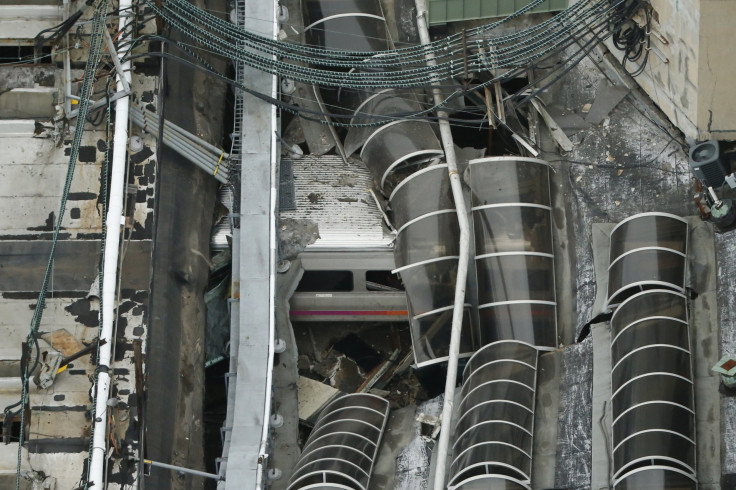Who Is Thomas Gallagher? NJ Transit Hoboken Train Crash Engineer Identified

The engineer in the NJ Transit commuter rail crash in a New Jersey train station Thursday morning has been identified, according to a new report. Thomas Gallagher was guiding the train that was sped into the Hoboken train station before crashing into the depot's wall, leaving at least one person dead and injuring more than 100 others.
A woman standing on the train station platform was killed from debris generated from the crash.
Officials name the engineer in the Hoboken train crash. He is 48-year-old Thomas Gallagher. He is said to be cooperating #abc7ny
— David Novarro (@DavidNovarro7) September 29, 2016
Photos and video footage taken by bystanders and passengers alike showed extensive damage to both the train and station, with the latter's roof being punctured from the strength of the train's impact.
The woman who was killed has been identified as Fabiola Bitta de Kroon, a Hoboken resident, according to a tweet from a local news reporter.
Just in on #HobokenCrash: Victim is Fabiola Bittar de Kroon, 34, of Hoboken.
— Josh Margolin (@JoshMargolin) September 29, 2016
The train carrying hundreds of passengers was cruising into the station at higher speeds than normal. A local reporter cited "sources" telling him the train was going at least 30 miles per hour at the time of impact. Trains are typically expected to be traveling no faster than 10 miles per hour as they approach any given station.
Sources say NJT train approached station at 3 times the typical 10 mph approach speed. pic.twitter.com/ZdLH1DeEWQ
— jim hoffer (@NYCinvestigates) September 29, 2016
Gallagher was found unresponsive but is reportedly cooperating with federal and local authorities investigating why the train was traveling at such elevated speeds. He was released from a nearby hospital Thursday afternoon after having been admitted with "critical injuries," ABC News reported.
The train reportedly did not have Positive Train Control, a safety system which could have prevented the crash by automatically slowing the train. Still, officials cautioned anybody from rushing to judgment and encouraged people to let the investigative process play out before jumping to conclusions.
"We know what happened," New York Gov. Andrew Cuomo said about the elevated speeds at which the train was traveling. "We don't know why it happened."
Officials said they can access the locomotive and expect to be able to pull the event recorder — similar to a plane's black box — which should provide crucial information about "speed and braking," Bella Dinh-Zarr, Vice Chair of the National Transportation Safety Board (NTSB), told reporters during a press briefing Thursday afternoon. Additional details were scarce, she said.
There is another event recorder in the "cab car," which Dinh-Zarr said was not immediately accessible. However, they plan on pulling that too once investigators can reach it. Passenger care were also inaccessible.
NTSB: Investigators cannot access passenger cars until the ceiling above train is structurally sound.
— Liz Cho (@LizCho7) September 29, 2016
The NTSB has been recommending Positive Train Control "for 40 years," Dinh-Zarr said before indicating officials would be looking into that aspect, as well.
Service at the major transit hub was interrupted for hours before being at least partially restored later Thursday afternoon.
© Copyright IBTimes 2025. All rights reserved.






















